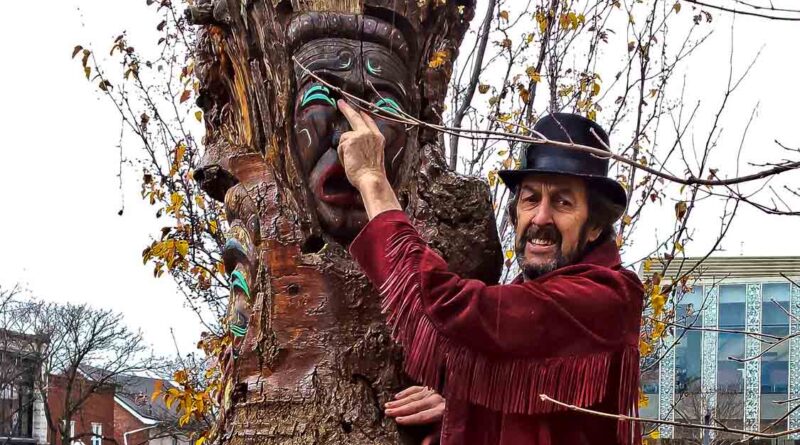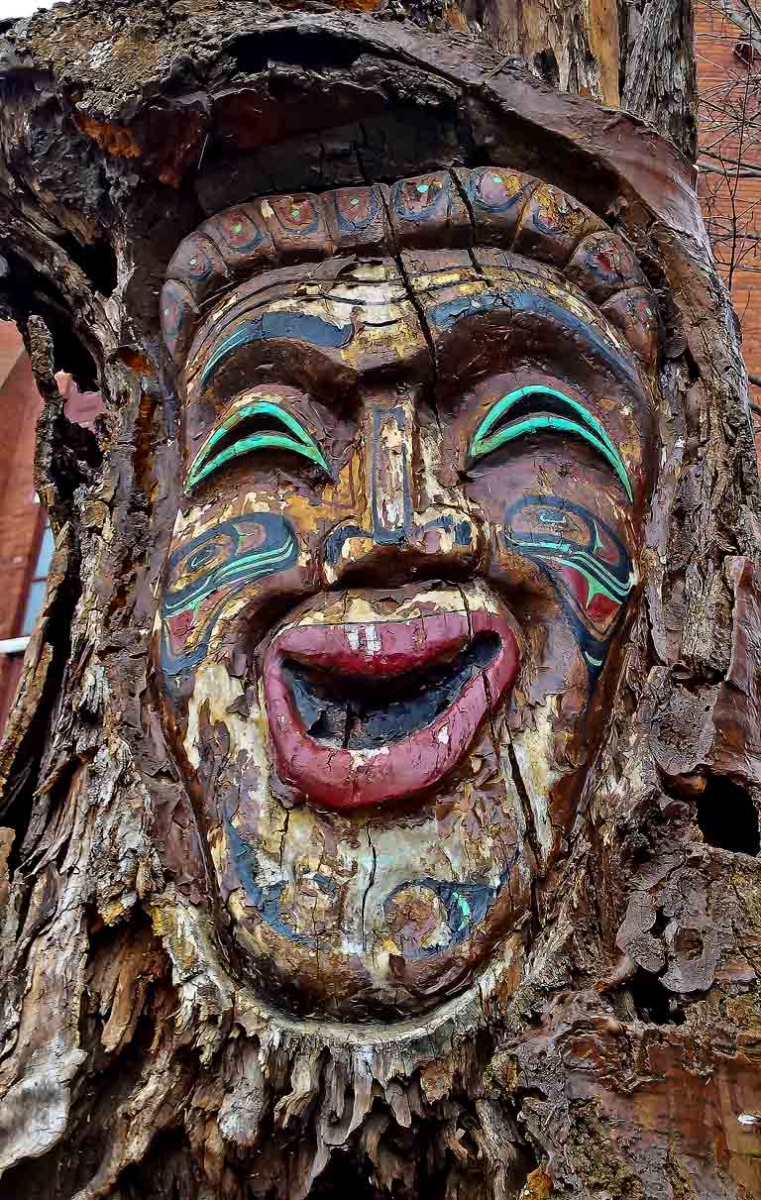What Rot Is This?
By John Swartz
Oldtimers, maybe some younger folk, will remember the trees on the south lawn of the Opera House. They were cut down about 15 years ago, leaving only the trunks. Some estimate those trees were 120 years old, which means they survived the fire which destroyed the original Opera House in 1915.
Jimi McKee and Wayne Hill had an idea to carve images, a Ribbon Dancer on the western trunk and theatrical Happy/Sad faces on the eastern one, into the trunks so they wouldn’t be, well, just a couple trunks waiting to be mulched. They did their handiwork 12 to 15 years ago by McKee’s recollection.
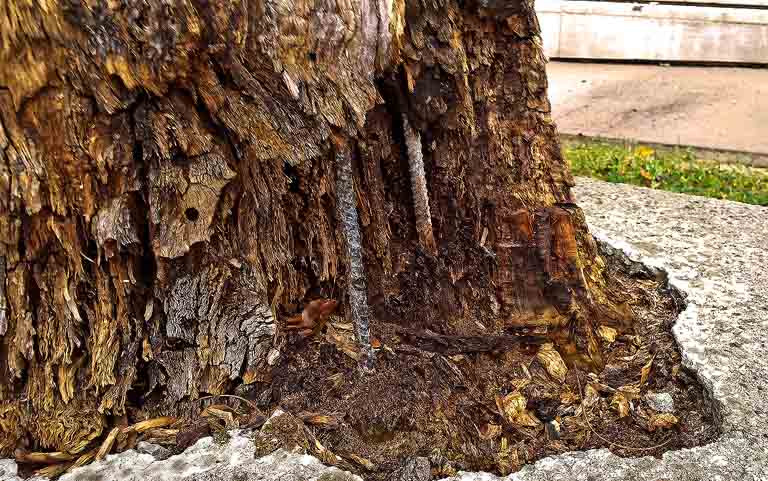
I turns out, even old trunks like these, left to their own devices, will continue the decomposition process which claimed the higher portions of the trees.
“I’ve been telling them for the last three years, “if you don’t so something with them, they’re going to rot away,”” said McKee. Them are City of Orillia staff.
Even though there is a public art policy guiding maintenance of art owned by the City, anyone who has ever tried to get action from City Hall knows it can seem to take forever to get a decision. Such is the case here.
“We’ve just had a preliminary discussion with Jimi. Obviously we need to reach out to him and finalize those discussions,” said Jacqueline Surette, the City’s manger of culture.
“We’re working through, we do have a capital project, looking at moving those inside. Wendy’s (Fairbairn, Opera House general manger) spearheading that. We’ll be reaching out to him to help with that project. We’ve already been talking to him, but that was in the summer. It’s supposed to happen before the snow flies.”
Looking at a calendar reveals there isn’t much time left on that count. The money to do step one, taking the trunks down, is part of a larger budget to beautify the southwest corner of Mississaga and West Streets adjacent to the Opera House.
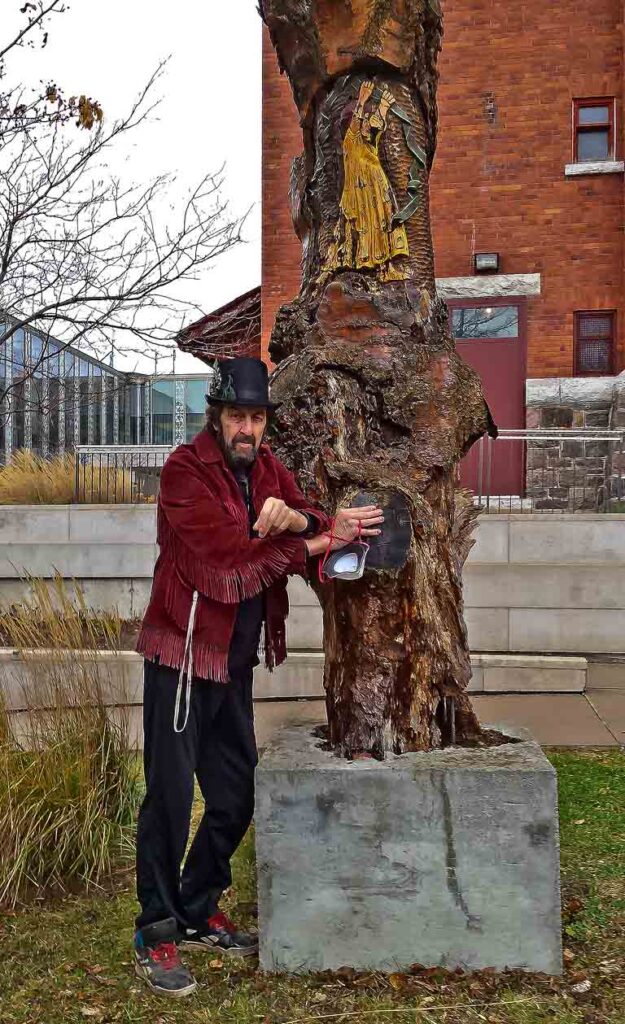
“That is the direction we have,” to take them inside Surette said. “We haven’t finalized anything to work with the artist.” The large project involves removing some shrubs, creating a busker spot, moving the flag poles and getting new lights for the tree which is now lit for the Christmas season.
Salvaging the art on the tree trunks is the goal. To do that, they will have to be cut away from the trunks. The plan is to rearrange them as one piece on another kind of wood pole or post of some kind. McKee said he was told they had $1,000 to do the work.
“I said at a dollar an hour I would still lose money. That’s way more work. At least spend a few bucks and let me save the trees by foaming (inside the trunks, they are hollow) to hold them stable because once the water is in this winter they are done.”
McKee has applied low density foam over the years to stem the tide, but the real solution is one he has used many times to restore totem poles – Clear Penetrating Epoxy Sealer. Two gallons cost $300 US, but it works. The epoxy is thin enough to penetrate through rot to good wood before hardening. It would take a lot more than two gallons to save the entire trunks, but since the plan is cut off the art it will take only a few gallons.
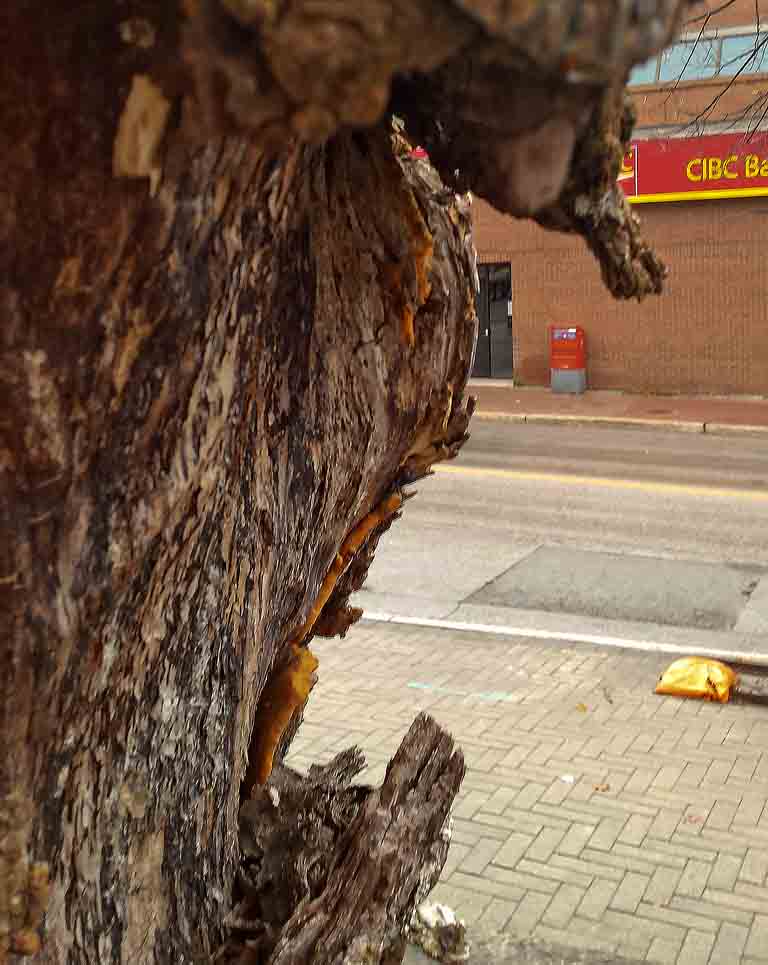
McKee said there is a right way to cut down the tree trunks.
“I’ll foam them and that will hold it together when they cut them down.” McKee has done salvage and restoration work on behalf of the City. The totem pole which used to be in Couchiching Beach Park on Terry Fox Circle now has a home at Rotary Place. Inside the Opera House is a totem pole he restored much of and crafted new parts for. He’s not getting any younger for the kind of work necessary on the trunks.
“I’ve spent ten years doing this (maintenance to hold them together) and somebody needs to take over,” McKee said.
![]()



(Photos by Swartz – SUNonline/Orillia) Main; Jimi McKee pokes his fingers through hoes which have rotted the tree trunks supporting his art at the Opera House.

